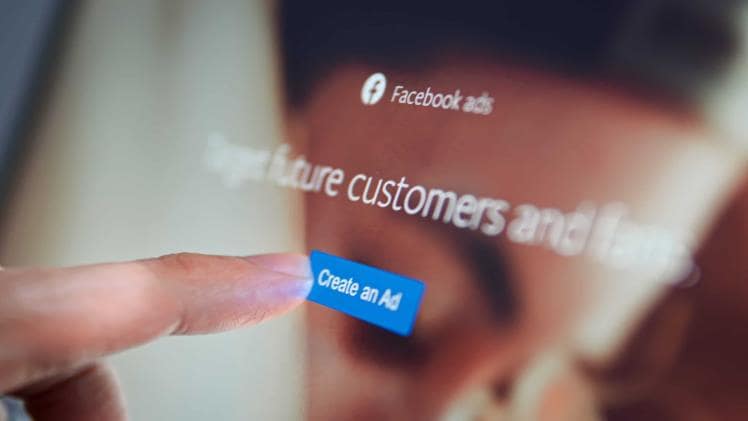Introduction
Everybody knows that Facebook advertising can be an essential tool for marketing professionals, small business owners and event organisers. Unfortunately, it has gathered a reputation as a product that only experts can understand.
We know that Facebook never set out to create a daunting set of tools; however, they’ve seemingly fallen into the trap of becoming too clever for their own good. It’s time to strip back the complex details and create a basic outline for making the most of this valuable advertising weapon.
Best practice 1 – Choose the correct objective
Our understanding of consumer behaviour has grown enormously as we continue to better evaluate online metrics. When the social media giant began to offer advertising and subsequent Facebook insight tools, it was limited in its objectives and tried to oversimplify the process. Customers had to decide on a very specific advert objective that included website clicks and others.
Things are different now. And as a result, marketers are able to aim for awareness, consideration and conversion style objectives to achieve from their Facebook ad campaigns. Within each of these categories, there are several marketing objectives that we can opt for.
- Awareness – brand awareness & reach
- Consideration – traffic, engagement, app installs, video views, lead generation & messages
- Conversion – conversions, catalogue sales, store traffic
Best practice 2 – Utilise placement optimisation
Facebook adverts can pop up in myriad different places. It isn’t a simple matter of booking an advert and waiting for it to appear. On the contrary, you have many options to select from. But unless you have a great deal of previous ad placement data to hand, it will be very difficult to decide on the best course of action.
For this reason, Facebook implements an optimisation option. This takes away the need to specify the location and allows the platform to offer your adverts in many different ways. These include:
- Facebook – feeds, instant articles, in-stream videos, right column, suggested videos, marketplace & stories
- Instagram – feed & stories
- Audience network – native, in-stream videos & reward videos
- Messenger – inbox, stories & sponsored messages
Best practice 3 – Use vertical videos
In a basic sense, videos move and images don’t. And while static ads certainly have their place in the Facebook ad campaign toolbox, nothing quite beats video engagement. Within the realms of video advert possibilities, vertical videos are proving to be the gold standard.
Most advertising info is consumed on mobile phones. And it stands to reason that traditional/horizontal videos aren’t the most comfortable method for mobile users to enjoy. Consider how simple it is for potential customers to view your videos in a vertical format without needing to turn their screens around and risk dropping their mobiles in the process.
Best practice 4 – Use less text
They say that less is more. And that certainly is the case when it comes to overlay text. Users engage better when their eyes are not constantly dragged away from an image or video that they are trying to focus on. Use your visual creativity to get the message across and only revert to text when it is absolutely essential.
Best practice 5 – Carousel images
Carousel ads allow for many different CTAs. Each card within the carousel can offer a separate opportunity to engage with the user and attempt to create a specified outcome. Not only does this save time by removing the need to create several adverts, but it is also a vital tool for identifying which ads have the most success. Some studies have shown that carousel ads continuously outperform standard adverts on Facebook. It’s possible that they could drive up to 10 times more traffic over a 3-month period.
Best practice 6 – Use authentic videos
As we have mentioned, video adverts are a powerful beast. They are able to engage users in a way that simple images cannot. But careful consideration must be paid to the video source. Staged and stock imagery can have a negative effect on your Facebook ads campaign. Users are more likely to find a connection with authentic videos that resonate with their everyday lives.
Best practice 7 – Leverage audiences betters
Understanding your customer’s needs is imperative if you are to create a Facebook ad campaign that resonates with a specific audience. But leveraging your audiences better not only means having a clear understanding of those connected to your page but also the wider Facebook population.
- Demographics – age, gender, jobs, education & relationships are all key data areas to consider
- Likes/dislikes – understand what your customers have in common
- Lifestyle – use audience insights to build specific buyer personas
Summary
There’s a lot to consider when creating any Facebook ad campaign. But there are common elements to consider every time you begin to plan. And it’s the planning phase that is king in this situation. Firstly, take advantage of any previous data that may help you and take the time to understand exactly who you are targeting. Next, utilise the best practices mentioned above. And finally, monitor new campaigns using a facebook insights tool and learn from your successes and failures to repeat or avoid next time.

